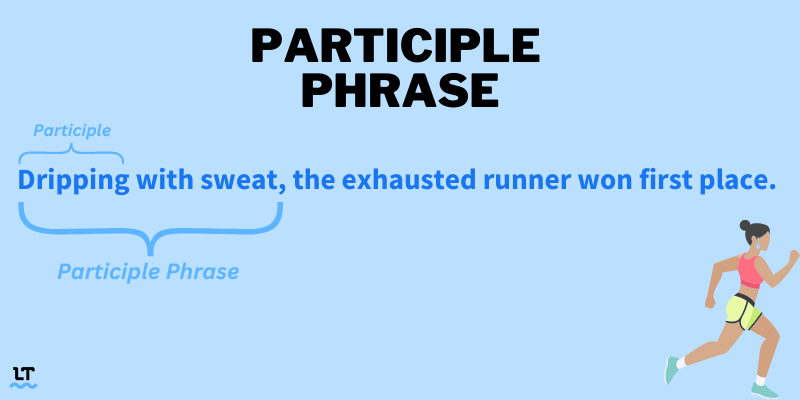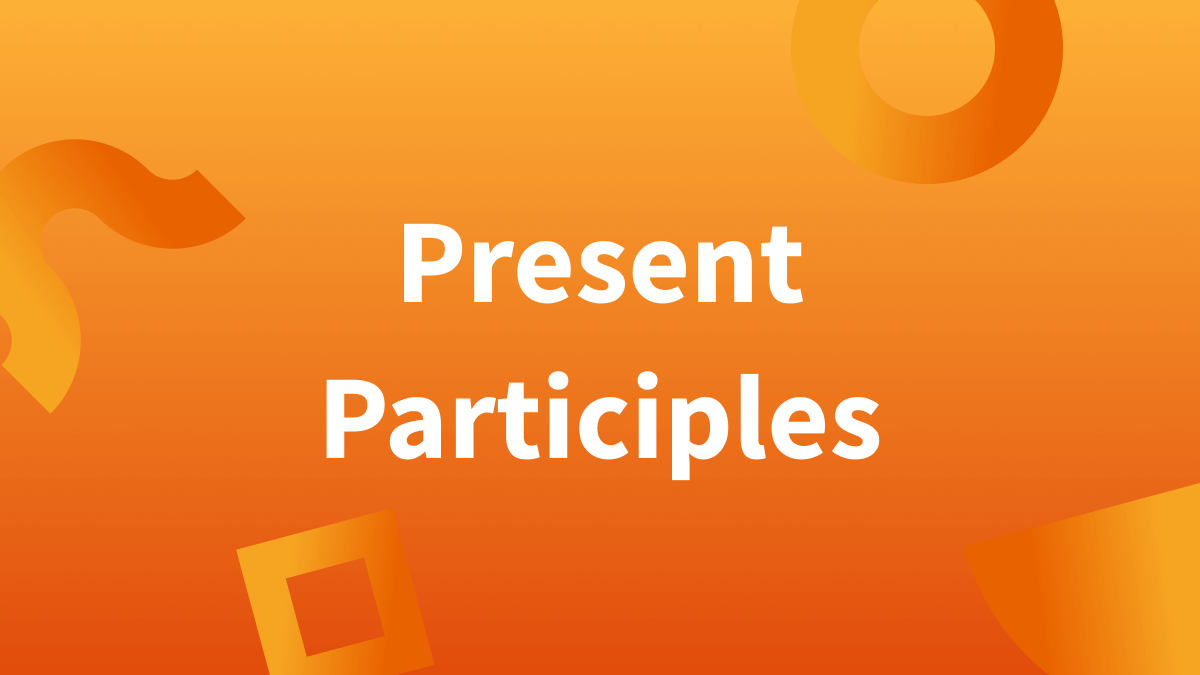Present Participles: Quick Summary
A present participle is a verb form in which you add “–ing” to the infinitive. Present participles are used in the progressive (continuous) tenses, but can also function as adjectives.
- My baby brother was crying all morning.
- The crying baby woke up the whole house.
Present Participles: Table of Contents
Present Participle in Participle Phrases
What’s the Difference Between Gerunds and Present Participles?
When it comes to verbs, there is so much more you need to know than the fact that they represent actions or states of being. For instance, you should be aware that there are different forms of verbs, each used for specific purposes.
Below, we’re going to review everything you need to know to master these particular verb forms—present participles—including their definition, usage, and examples.
What are you waiting for? Let’s begin!
What Is a Present Participle?
A present participle is a verb form that ends in “–ing” and is used in progressive tenses. Remember, progressive tenses (also known as continuous tenses) express ongoing or in-progress actions or states at a specific time in the past, present, or future.
Present participles are typically formed by adding “–ing” to the infinitive form of a verb.
He had been playing a video game when I called him.
I am eating ice cream.
Sarah will be performing tomorrow at 5 PM.
Present participles can also function as adjectives—that is, words that modify nouns and pronouns.
The barking dog woke up the entire neighborhood.
We enjoyed a refreshing swim in the pool.
Nova and I passed a group of laughing children by the park.
Present Participle Examples
Here are a few more examples of present participles.
Forming Present Participles
Generally, all you have to do is add “–ing” to the infinitives of both regular and irregular verbs to form the present participle.
talk → talking
scream → screaming
laugh → laughing
There are some exceptions, of course.
1. If a verb ends in “–e,” drop the “–e,” and add “–ing.”
make → making
write → writing
take → taking
2. If a verb ends in “–ie,” drop those two letters, add a “–y,” and then add “–ing.”
lie → lying
tie → tying
die → dying
3. If a verb ends in a consonant with a single vowel before it, double the consonant and add “–ing.”
run → running
swim → swimming
sit → sitting
4. If a verb ends in a consonant but has multiple vowels beforehand, do not double the consonant.
boil → boiling
sail → sailing
hear → hearing
These are just some of the few guidelines to follow when adding “–ing” to words. Of course, because English is English, there are many exceptions and irregular forms that have to be memorized individually.
US vs. UK English
We should note that the way present participles are formed in US and UK English varies, particularly for two-syllable words that end in “L.”
In UK English, the general rule is to double the “L” and add “–ing.”
- We were marvelling at the artwork.
In US English, however, the “L” is usually only doubled when the final syllable is stressed.
- He was controlling the drone from afar.
If the final syllable is not stressed, then the “L” does not get doubled.
- Erica will be modeling for her favorite fashion line.
Present Participles in Participial Phrases
Participial phrases are a group of words that start with a participle and contain other parts of speech. They behave like adjectives in the sense that they modify nouns, pronouns, and noun phrases.
Here are a few examples of participial phrases that contain a present participle.
He found his grandfather feeding the ducks at the park.
The barking dog alerted the neighbors.
The rustling leaves caught the squirrel’s attention.
Keep in mind that if the participial phrase is at the start of a sentence, it should be separated from the main clause with a comma.
Smiling and laughing, the child said goodbye to her parents as she went into daycare.
Whistling a tune and tapping his foot, he patiently waited for his friends.
Running late, she grabbed her purse and ran out the door.

Participial phrases can also be found in the middle of a sentence. They may appear within commas unless they provide important information.
The artist, holding his brush with a steady hand, added the finishing touches to his masterpiece.
The boy standing in line over there is my best friend.
Keep in mind that present participles should be placed directly next to the noun it’s modifying to avoid nonsensical sentences.
Running down the street, the bus was missed.
The placement of the participle phrase in the sentence above can be interpreted as the bus was running down the street. Instead, it should be rewritten as:
Despite running down the street, Lucy missed the bus.
What’s the Difference Between Gerunds and Present Participles?
A gerund is also formed by adding “–ing” to the infinitive. However, whereas present participles can function as adjectives, gerunds only function as nouns.
Swimming is my favorite sport.
My favorite hobby is swimming.
I enjoy swimming.
I convinced Lauren to give swimming a try.
I envision myself swimming until I can’t anymore.
He’s good at swimming.
Using Present Participles Correctly
If you want to master verbs, then you have to thoroughly understand what present participles are and how to use them.
Using LanguageTool as your writing assistant ensures proper use of present participles. This multilingual spelling, grammar, and punctuation checker also corrects various types of errors and optimizes your writing by improving word choice and rephrasing your sentences.
Give it a try—it’s free to use!

